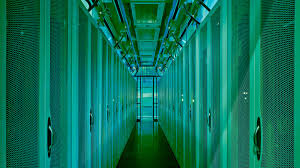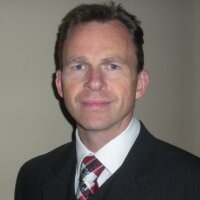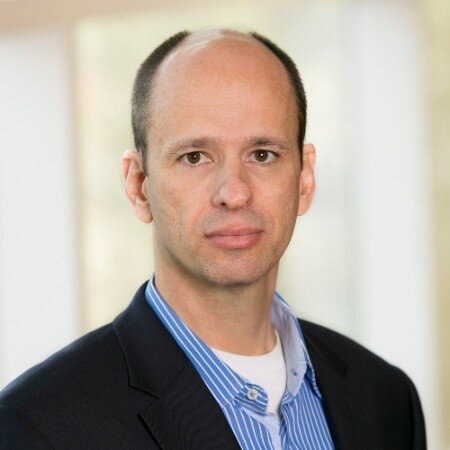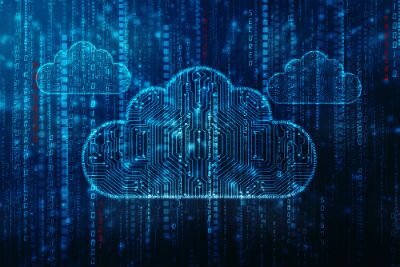General digital business transformation and managing the new normal around the COVID-19 pandemic have hugely impacted how businesses and IT operate. Faced with mounting complexity, rapid change, and striking budgets, IT operational services must be smarter and more efficient than ever.
The next BriefingsDirect Voice of Innovation podcast examines how Hewlett Packard Enterprise (HPE) Pointnext Services is reinventing the experience of IT support to increasingly rely on automation and analytics to help enable continued customer success as IT enters a new era.
Listen to the podcast. Find it on iTunes. Read a full transcript or download a copy.
Here to share the HPE Pointnext Services vision for the future of IT operational services are Gerry Nolan, Director of Portfolio Product Management, Operational Service Portfolio, at HPE Pointnext Services, and Ronaldo Pinto, Director of Portfolio Product Management, Operational Service Portfolio, at HPE Pointnext Services. The discussion is moderated by Dana Gardner, Principal Analyst at Interarbor Solutions.
Here are some excerpts:
Gardner: Gerry, is it fair to say that IT has never had a more integral part of nearly all businesses and that therefore the intelligent support of IT has never been more critical?
Nolan: We’ve never seen a time like this, Dana. Pretty much every aspect of our life has now moved to digital. It was already moving that way. Everyone is spending more hours per day in various collaboration platforms, going through various digital interactions, and we’re seeing that in our business as well.
That applies to whether you are ordering a pizza, booking time at your gym, getting your morning coffee — pretty much your life has changed forever. We see that dramatically impacting the IT space and the customers we deal with.
So, yes, it’s a unique time, we have never seen it before, and we believe things will never be the same again.
Gardner: So, we are reliant on technology for commerce, healthcare, finance, all across many of these scientific activities to combat the pandemic, not to mention more remote education and more remote work — basically every facet of our modern life.
Consequently, how enterprise IT uses services and support has entered a new phase, a new era. Please explain why a digital environment requires more tools and opportunity to the people delivering the new operational services.
Nolan: The IT landscape is very dynamic. There is an expanding array of technology choices, which brings more complexity. Of course, the move to cloud and edge computing introduces new requirements from an IT operations point of view.
Then we got hit with COVID-19 and a whole new set of challenges — huge increases in remote workforce, and all creating problems with networks, performance, and security.
For example, a retail customer that I just met with — they don’t even have a four-walls data center anymore, most of their IT is distributed throughout their retail stores — and another customer, a large telco, is installing edge-related servers on their electricity pylons on the sides of mountains in very remote areas. These types of use-cases need very different operational processes, approaches, and skills.
Then we got hit with COVID-19, and that brings a whole new set of challenges, with locking down of IT environments, huge increases in remote workforces, all creating problems with network capacity, performance, and security challenges.
As a result, we are seeing customers needing more help than ever while they try and maintain their businesses. At the same time, they need to plan and evolve for the medium- to long-term. They need solutions both for today — to help in this unique lockdown mode — but also to accelerate transformation efforts to move to a digitally enabled customer experience.
Gardner: Ronaldo, this obviously requires more than a traditional helpdesk and telephone support. Where does the operational experience, of even changing the culture around support, kick in? How do we get to a new experience?
Pinto: Dana, many people associate traditional support to telephone support, but today it needs to be much more. As Gerry described, we are moving toward a very distributed, remote, low-touch to no-touch world, and COVID-19, the pandemic, just accelerated that.
To operate in such an environment, companies depend on an increasing number of tools and technologies. You have more variables today, just to control and maintain your performance. So it’s extremely important to arm the people that provide technical support with the latest artificial intelligence (AI) tools and digital infrastructure so they continue to be effective in the work they do.
Gardner: Gerry, how has the pandemic and emphasis on remote services accelerated people’s willingness to delve into the newer technologies around automation, AI, predictive analytics and AIOps? Are people more open now to all of that?
Nolan: No question, Dana. Consider any great customer experience that you have today — from dealing with your mobile phone provider to, in my case recently, my utility company. The great experiences offer a variety of ways to access the information and the help you may need on a 24-7 basis. Typically, this has involved a whole range of different elements — from a portal or an app, to some central hub — for how you engage. That can include getting a more personalized dashboard of information and help. Those experiences also often have different engagement options, including access to live people who can answer questions and provide guidance to solve issues. That central hub also provides a wealth of helpful, useful information and can be AI-enabled to provide predictive alerts via dashboards.
There are companies that still provide only a single channel, such as, for example, the utility company I had to call yesterday, which kept me on hold for 45 minutes until I hung up. I tried the website, and they had multiple websites. I sent an e-mail; I am still waiting for a response!
The great customer experiences have multiple elements and dimensions to them. They have great people you can talk to. You have multiple ways of getting to those people. They have a great app or website with all sorts of information and help available, personalized to your needs.
That’s the way of the future. Those companies that are successful and have already started on that path are seeing great success. Those that have not are struggling — especially in this climate. Now, not only is there more need to go digital, the pressure on revenue limits the investment dollars available to move in that direction if you haven’t already done so.
So, yes, there’s a multitude of different challenges here we are dealing with.
Gardner: It’s amazing nowadays when you deal, as a customer, with companies, how you can recognize almost instantly the ones that have invested in digital business transformation and are able to do a lot of different things under duress — and those who didn’t. It’s rather stark.
Ronaldo, dealing with these complexities isn’t just a technology issue. Oftentimes it includes a multi-vendor aspect, a large ecosystem of suppliers. Pointing fingers isn’t going to help if you’re in a time-constrained situation, a crisis situation.
How do the new operational experiences include the capability to bring in many vendors and even so provide a seamless experience back to that customer?
Seamless collaborations succeed
Pinto: HPE has historically collaborated. If you look at our customers today, they have best-of-breed environments and there are many emerging tools that make those environments more efficient. We also have several startups.
So, it’s extremely important for us to serve our customers by being able to collaborate seamlessly with all of those companies. We have done that in the past and we are expanding the operational capabilities, including tools we have today, to better understand performance, integration between our products, and with third-party products. We can streamline all of that collaboration.
Gardner: And, of course, the complexity extends across hybrid environments, from edge to cloud — multi-cloud, private cloud, hybrid cloud. Is that multi-vendor and multi-architecture mix something that you’re encountering a lot?
Nolan: Today, every customer has a multi-vendor IT landscape. There are various phases of maturity in terms of dealing with legacy environments. But they are dealing with new IT on-premises technologies, they are trying to deploy cloud, or they may be moving to public cloud. There’s a plethora of use cases we see globally with our customers.
The classic issue is when there’s a problem, the finger-pointing or blame-game starts. Even triaging and isolating problems in these environments can be a challenge, let alone the expertise to fix the issue. The more vendors you work with the more dimensions you have to manage.
And the classic issue, as you point out, is when there’s a problem, the finger-pointing or the blame-game starts. Even triaging and isolating problems in these types of environments can be a challenge, let alone having the expertise to fix the issue. Whether it’s in the hardware, software layer, or on somebody else’s platform, it’s difficult. Most vendors, of course, have different service level agreements (SLAs), different role names, different processes, and different contractual and pricing structures.
So, the whole engagement model, even the vocabulary they use, can be quite different; ourselves included, by the way. So, the more vendors you have to work with, the more dimensions you have to manage.
And then, of course, COVID-19 hits and our customers working with multiple vendors have to rely on how all those vendors are reacting to the current climate. And they’re not all reacting in a consistent fashion. The more vendors you have, the more work and time it’s going to take — and the more cost involved.
We call it the power of one. Our customers see huge value in working with a partner who provides a single point of contact, that single throat to choke or hand to shake, and a single focal point for dealing with issues. You can have a single contract, a single invoice, and a single team to work with. It saves a lot of time and it saves a lot of money.
Organizations already in that position are seeing significant benefits. Our multi-vendor business is growing very, very well. And we see that moving into the future as companies try to focus on their core business, whatever that might be, and let IT take care of itself.
Edge to cloud to data center
Pinto: To your question, Dana, on hybrid environments, it’s not only hybrid, it’s edge to cloud and to the data center. I can give you two examples.
We have a large department store customer with the technology in each of the many stores. We support not only the edge environments in those stores but all the way through to their data center. There are also hybrid environments for data management where you typically have primary storage, secondary storage, and your archiving strategy. All of that is managed by a multitude of backup and data-movement software.
The customer should not be worried with component by component, but with a single, end-to-end solution. We help customers abstract that by supporting the end-to-end data environment and collaborating with the third-party software vendors or platform vendors that will inevitably be a part of the solution.
Gardner: Gerry, earlier you mentioned your own experience with a utility company. You were expecting a multi-channel opportunity to engage with them. How does the IT operational services as an experience become inclusive of such things? Why does that need to be all-inclusive across the solutions and support approaches?
Have it your way
Nolan: An alternative example that I can give is my bank. I have a couple of different banks that I work with, but one in particular invested early in a digital platform. They didn’t replace their brick and mortar models. They still have lots of branches, lots of high-tech ATMs that allow for all types of self-serve.
But they also have a really cool app and website, which they’ve had for a number of years. They didn’t introduce digital as a way of closing down their branches, they keep all of those options available because different people like to integrate and work with their service providers in different ways, and we see that in IT, too.
The key elements to delivering a successful experience in the IT space, an AI-enabled experience, includes having lots of expertise and knowledge available across the IT environment, not just on a single set of products.
Of course, a digital platform provides that personalized view. It includes things like dashboards of what’s in my environment, ongoing alerts and predictions — maybe capacity is running out or maybe costs are beyond what was forecast. Or maybe I have ways of optimizing my costs, some insights around updates to my software, licenses or some systems might be reaching the end of their support life. There is all sorts of information that should be available to me in a personalized way.
And then in terms of accessing experts, the old model is to get on the phone, like I was yesterday for 45 minutes talking to somebody, and in my case, I wasn’t successful. But customers, in some cases, they like to deal with the experts through a chat window or maybe live on the phone. Others like to watch expert technical tips and technique videos. So, we have developed an extensive video library of experts wherein you can pick and choose and listen to some tips and techniques about how to deal with certain key topics we see that customers are interested in.
Moderated forums: Customers actually like sharing their experiences with each other. And then our experts get involved and you mix and match with partners and end-customers and you get this very rich dialogue that goes on around particular topics, best practices, ideas, or there could be problems that somebody else has solved.
AI is at the heart of all of this because it’s constantly learning. It’s like a self-propelling mechanism that just gets better over time. The more knowledge it gains, the more answers are provided.
AI is at the heart of all of this because it’s constantly learning. It’s like a self-propelling mechanism that just gets better over time. The more people come on board, the more knowledge it gains, the more questions they ask, the more answers are provided.
The whole thing just gets better and better over time. It’s key, of course, to have that wide portfolio of help for customers. If they have a strategy, make it work better; if they don’t have a strategy and need help building one, we can help them do that all the way through to designing and implementing those solutions.
And then they can get the ongoing support, which is where Ronaldo and I spend most of our life. But it’s important as a vendor or as a partner to be able to offer customers help across the value chain or across the lifecycle, depending on where they need that help.
Gardner: Ronaldo, let’s dig more deeply into the specifics of the new HPE Pointnext Services’ operational services’ approach, modernizing operations for the future of IT. What does it include?
Meet customers’ modernization terms
Pinto: We are doing all of this modernization with the customer in mind. What is really important for us is not only accomplishing something, but how you accomplish it. At the end of any interaction the customer needs to feel that their time was used effectively. HPE shows a legitimate concern with the customer success and in feeling positive at the end of the interaction.
Gerry mentioned the AI tools and alerts. We are integrating all of the sensors, telemetry we get from products in the field, all the way up to our operational processes in the back end so that customers can accomplish whatever they need with us on their own terms.
For example, if there’s an alert or a performance degradation in a product, we provide tools to dig deeper and understand why. “Hey, maybe it’s a component in the infrastructure that needs to be updated or replaced?” We are integrating all of that. We see into our back end operational processes so that we can even detect issues before the customer does. Then we just notify the customer that an action needs to be performed and, if needed, we dispatch the part replacement.
If the customer needs someone at the site to do the replacement, no problem. The customer can schedule that visit easily in a web interface and we will show up in the window that the customer chooses.
It’s offering the customer, as Gerry mentioned, multiple channels and multiple ways to interact. For customers, it means they may prefer a remote automated web interface or the personal touch of a support engineer, but it should be on the customers’ own terms.
Gardner: I have seen in the release information you provide to analysts like myself the concept of a digital customer platform. What do you mean by a digital customer platform when it comes to operational services?
A focused digital platform
Nolan: It’s all of the things that Ronaldo just mentioned coming together in a single place. Going back to my bank example, they give you a credit card where you typically have a single place that you go from a digital point of view. It’s either an app and/or a website and that provides you all of this personalized information that’s honed to your specific needs and your specific use case.
For us, from a digital point of view and from a customization platform, we want to provide a single place regardless of your use case. So, whether you are a warranty level customer or a consumption customer, buying your IT on a pay-as-you-go basis, all of the help you need, all of the information, dashboards, all of the ways of engaging with us as a partner, it’s all through a single portal. That’s what we mean when we say the digital platform, that central place that brings it all to life for you as a customer.
Gardner: Why is the consumption-based approach important? How has that changed the game?
Pinto: It’s the same idea, to provide customers the option to consume IT and to use IT on their own terms. HPE pioneered the hybrid IT consumption model. Behind that is Pointnext through all the services we provide — whether the customer chooses to consume or not, on an as-a-service basis, consuming an outcome, or if the customer wants to consume the traditional way, where the customer takes ownership of their underlying infrastructure. We automate those more transactional, repeatable tasks and help the customer focus on innovation and meeting their business objectives through IT. So that is going to be consistent across all the consumption models.
Nolan: What’s important to recognize here is, as a customer, you want choice and choice is good. If the only option you have is, for example, a public cloud solution, then guess what? Every problem you as a customer have, then that public cloud provider has one toolbox. It’s a public cloud solution.
I have just been speaking with a large insurance company and they are moving toward a cloud-first strategy, which their board decided they needed. So, everything in their mind needs to move to the cloud. And it’s interesting because they decided the way they are going to partner to get that done is directly with a public cloud vendor. And guess what? Every problem, every workload in that organization is now directed toward moving to public cloud, even where that may not be the best outcome for the customer. To Ronaldo’s point, you want to be assessing all of your workloads and deciding where is the best placement of that workload.
You might want to do that work inside your firewall and on your network because certain work will get done better, more cost effectively, and for all sorts of security, network latency, and data regulatory reasons. Having multiple different choices — on-premises, you can do CAPEX, you can do as-a-service — is important. Your partner should be able to offer all those choices. We at HPE, as Ronaldo said, pioneered the IT as-a-service mode. We already have that in place.
Our HPE GreenLake offering allows you to buy and consume all of your IT on a pay-as-you-go basis. We just send you a monthly bill for whatever IT you have used. Everything is included in that bill — your hardware, software, and all of the services, including support. You don’t really need to worry about it.
You care instead about the outcomes. You just want the IT to take care of itself, and you get your bill. Then you can easily align that cost with the revenue coming in. As the revenue goes up, you are using more IT, you pay more; revenue goes down, you are using less IT, you pay less. Fairly simple, but very powerful and very popular.
Gardner: Yes, in the past we have heard so many complaints about unexpected bills, maintenance add-ons, and complex licensing. So, this is something that’s been an ongoing issue for decades.
Now with COVID-19 and so many people working remotely, can you provide an example of bringing the best minds on the solutions side to wherever a problem is?
Room with a data center view
Nolan: One that comes to mind sounds like a simplistic use case, but it’s valuable in today’s climate, with the IT lockdown. Inside of HPE, we use multiple collaboration environments. But we own our own collaboration platform, HPE MyRoom.
We launched a feature in that collaboration platform called Visual Remote Guidance, which allows us to collaborate like we are in the customer’s data center virtually. We can turn on the smart device on the customer side, and they can be enabled, through the camera, to actually see the IT situation they are dealing with.
It might be an installation of some hardware. It could be resolving some technical problem. There are a variety of different use cases we are seeing. Of course, when a system causes a problem and the company has locked-down their entire IT department, they don’t want to see engineers coming in from either HPE or one of our partners.
Visual Remote Guidance allows us to collaborate like we are in the customer’s data center virtually. We can turn on the smart device on the customer side and they can be enabled to see the IT situation that they are all dealing with.
This solution immediately became very useful in helping customers because we now have thousands of remote experts available in various locations around the world. Now, they can instantly connect with the customer. They can be the hands and eyes working with the customer. Then the customer can perform the action, guided all the way through the process by their remote HPE expert. And that’s using a well-proven digital collaboration platform that we have had for years. By just introducing that one new additional feature, it has helped tremendously.
Many customers were struggling with installing complex solutions. Because they needed to get it done and yet didn’t want to bring anybody onto their site, we can take advantage of our remote experts and get the work done. Our experts guide them through, step by step, and test the whole thing. It’s proving to be very effective. It’s used extensively now around the world. All of our agents have this on their desktop and they can initiate with any customer, in any conversation. So, it’s pretty powerful.
Gardner: Yes, so you have socialized isolation, but you have intense technology collaboration at the same time.
Ronaldo, HPE InfoSight and automation have gone a long way to helping organizations get in front of maintenance issues, to be proactive and prescriptive. Can you flesh out any examples of where the combination of automation, AI, AIOps, and HPE InfoSight have come together in a way that helps people get past a problem before it gets out of hand?
Stop problems before they start
Pinto: Yes, absolutely. We are integrating all our telemetry from the sensors in our technology with our back-end operational processes. That is InfoSight, a very powerful, AI and machine learning (ML) tool. By collecting from sensors — more than 100 data points from our products every few seconds — and processing all of that data on the back end, we can be informed by trends we see in our installed base and gather knowledge from our product experts and data scientists.
That allows us to get in front of situations that could result in outages in the environment. For example, a virtual storage volume could be running out of capacity. That could lead to storage devices going offline, bringing down the whole environment. So, we can get ahead of that and fix the problem for the customer before it gets to a business-degradation situation.
We are expanding the InfoSight capabilities on a daily basis throughout the HPE portfolio. We also should be able to identify, based on the telemetry of the products, what workloads the customer is running and help the customer better utilize all those underlying resources in the context of a specific workload. We also could even identify an improvement opportunity in the underlying infrastructure to improve the performance of that workload.
Gardner: So, it is problem solving as well as a drive for continual IT improvement, refinement, and optimization, which is a lot different than a break-fix mentality. How will the whole concept of operational services shift in your opinion from break-fix to more of optimization and continuous improvement?
Pinto: I think you just touched on probably the
most important point, Dana. Data centers today and technology are increasingly redundant and resilient. So really break-fix is becoming table stakes very quickly.
The metaphor that I use many times is airlines. In the past, security or safety of the airline was something very important. Today it’s basically table stakes. You assume that the airline operates at the highest standards of safety. So, with break-fix it’s the same. HPE is automating all of the break-fix operations to allow customers to focus on what adds the most value to their businesses, which is delivering the business outcomes based on the technology — and further innovating.
The pace of innovation in this business is unprecedented, both in terms of tools and technologies available to operate your environment as well as time-to-market of the digital applications that are the revenue generators for our customers.
Gardner: Gerry, anything additional to offer in terms of the vision of an optimization drive rather than a maintenance drive?
Innovate to your ideal state
Nolan: Totally. It’s all about trying to stay ahead of the business requirements.
For example, last night Ronaldo and I were speaking with a customer with a global footprint. They happen to be in a pretty good state, but it was interesting talking to them about what would a new desired state look like. We work closely with customers as we innovate and build better service capabilities. We are trying to find out from our customers what is their ideal state, because it’s all about delivering the customer experience that maps to each customer’s use case — and every customer is different.
I also just met with a casino operator, which at the moment is in a bit of a tough space, but they have been acquiring other casinos and opening new casinos in different parts of the world. Their challenge is completely different than my friend in the insurance industry who was going to cloud-first.
The casino business is all about security and regulation. They are really not in the business of IT — but IT is still critical to their success. They are trying to understand all the IT that they have.
The casino business is all about security, and a lot of regulation. In his case, they were buying companies, so they are also buying all of this IT. They need help controlling it. They are in the casino business, they are not really in the business of IT, but IT is still critical to their success. And now they are in a pandemic-driven shutdown, so they are trying to figure out how to manage and understand all of the IT they have.
For others in this social isolation climate, they need to keep the business running. Now as they are starting to open up, they need help with all sorts of issues around how to monitor customers coming into their facilities. How do they keep staff safe in terms of making sure they stay six feet apart? And HPE has a wealth of new offerings in that space. We can help customers deal with opening up and getting back to work.
Whether you are operating an old environment, a new environment, or are in a post COVID-19 journey — trying to get through this pandemic situation, which is going to take years — there are all sorts of different aspects you need to consider as an organization. Trying to paint your new vision for what an ideal IT experience feels like — and then finding partners like HPE who can help deliver that — is really the way forward.
Listen to the podcast. Find it on iTunes. Read a full transcript or download a copy. Sponsor: Hewlett Packard Enterprise.
You may also be interested in:
-
HPE Pointnext’s Nine-Step Plan for Enterprises to Attain the New Business Normal
-
As containers go mainstream, IT culture should pivot to end-to-end DevSecOps
-
AI-first approach to infrastructure design extends analytics to more high-value use cases
-
How Intility uses HPE Primera intelligent storage to move to 100 percent data uptime
-
As hybrid IT complexity ramps up, operators look to data-driven automation tools
-
How containers are the new basic currency for pay as you go hybrid IT
-
HPE strategist Mark Linesch on the surging role of containers in advancing the hybrid IT estate
-
How the Catalyst UK program seeds the next generations of HPC, AI, and supercomputing






















